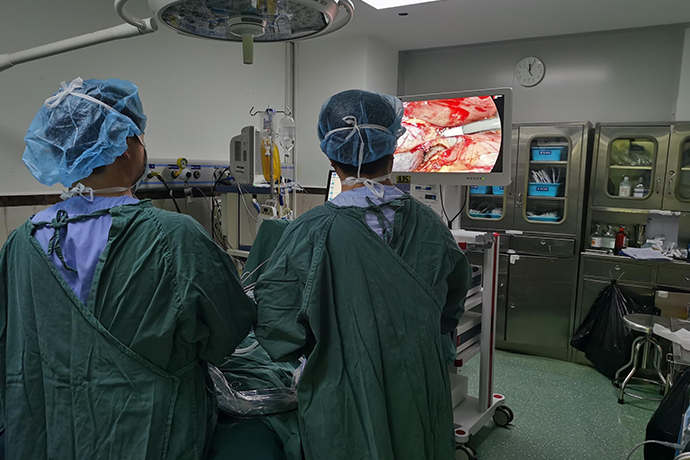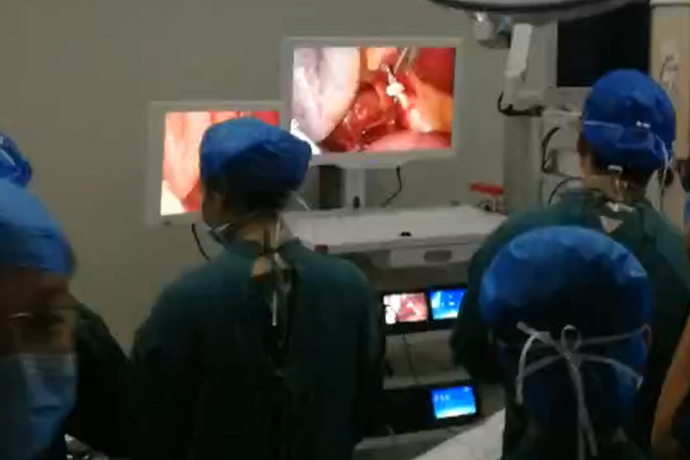[Laparoscopy in Hepatobiliary Surgery] Hemangioma of the caudate lobe of the liver
Release time: 28 Mar 2023 Author:Shrek
With the continuous advancement of surgical techniques, laparoscopic resection of tumors in various locations of the liver has made great progress, but laparoscopic resection of caudate lobe tumors is still a huge challenge for liver surgeons. The caudate lobe of the liver was once called "the last forbidden zone of liver surgery". Due to the anatomical relationship, open surgery is already very difficult, while laparoscopic surgery is "more difficult". However, laparoscopic surgery has many advantages for patients such as less trauma and faster recovery, and patients can benefit to the greatest extent.

The caudate lobe of the liver is an anatomical area divided according to liver segmentation, which is often referred to as liver segment I clinically. Due to its specific anatomical location, it is listed separately from the left and right lobes of the liver. The caudate lobe of the liver is mainly located on the back of the liver, surrounding the retrohepatic inferior vena cava, above it is the confluence of the hepatic veins, and below it is the portal vein and bile duct at the first hepatic hilum. Therefore, surgery for caudate lobe tumors is risky and difficult. Care should be taken to protect the structures in the transverse groove of the hepatic portal, especially the left hepatic duct, during caudate lobe surgery. More care should be taken when dealing with blood vessels, mainly the left caudate lobe vein and the middle hepatic vein in front of the upper pole of the caudate lobe, so as not to cause massive hemorrhage or air embolism. However, with the advancement of medical equipment and the development of surgical technology, surgical resection of the caudate lobe has become a common surgical method, and it can even be performed laparoscopically.
Symptom
When the hemangioma is small, there are no clinical symptoms. A small number of hepatic hemangiomas gradually increase in size, oppressing surrounding organs, such as the stomach and duodenum, causing corresponding clinical symptoms, such as epigastric discomfort, abdominal distension, belching, and abdominal pain.
Typical symptoms
Most patients have no clinical symptoms, and some patients have traction symptoms when the tumor volume is large, such as epigastric discomfort, abdominal distension, belching, abdominal pain, etc.
Abdominal mass, but no tenderness on palpation.
Laparoscopic hemangioma resection of the caudate lobe of the liver, the brief introduction is as follows.
Preoperative examination
The patient, female, 54 years old, had a liver hemangioma found in physical examination.
B-ultrasound examination suggested: caudate lobe hemangioma of the liver.
The operation time of laparoscopic hepatic caudate lobe tumor resection was 2.5 hours, and the intraoperative blood loss was 70ml. The patient got out of bed on the first day after the operation, took food on the third day, and was discharged smoothly on the sixth day. The largest incision on the abdominal wall Only 4cm. Postoperative pathology: liver (caudate lobe) cavernous hemangioma, tumor size 6.2cm*5.8cm.
Patients with hepatic hemangioma must complete preoperative examinations and preparations before undergoing minimally invasive surgery. On the contrary, patients with hepatic hemangioma will be treated with minimally invasive surgery, the risk will be further reduced, and the surgical trauma will be small, the postoperative recovery speed of the patient will be faster, and the hospital stay will be shortened, and , The patient's surgical incision is also very beautiful. Moreover, it is necessary to improve the abdominal CT or abdominal magnetic resonance examination, so that the location and size of the hepatic hemangioma can be accurately located. During the operation, precise surgical treatment can be achieved. In this way, the patient can recover healthily and quickly. back to normal.

- Recommended news
- 【General Surgery Laparoscopy】Cholecystectomy
- Surgery Steps of Hysteroscopy for Intrauterine Adhesion
- [Gynecological Hysteroscopy] Techniques for Preventing and Treating Complications of Hysteroscopic Surgery
- [Gynecological Hysteroscopy] Hysteroscopic Adhesiolysis
- [Gynecological Hysteroscopy] IUD Removal under Hysteroscopy